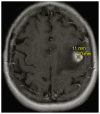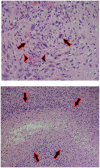Glioblastoma: Part I. Current state of affairs
- PMID: 21736079
- PMCID: PMC6188294
Glioblastoma: Part I. Current state of affairs
Abstract
Although uncommon, "brain cancer" is one of the most feared diseases that afflict human beings. While still regarded as one of the most deadly forms of primary brain neoplasm, recent advances in the treatment of glioblastoma (GBM) have offered new hope for patients, families, and clinicians. In the first part of this two-part review, we will focus on the multidisciplinary advances that have established the current treatment approach in the management of GBM. In the second part of this review, ongoing research will be presented including current clinical trials as well as some of the newer technologies that are forming the promise of the future.
Figures






References
-
- CBTRUS. CBTRUS Statistical Report: Primary Brain and Central Nervous System Tumors Diagnosed in the United States in 2004–2006. Source Central Brain Tumor Registry of the United States; Hinsdale, IL: 2010. website: www.cbtrus.org.
-
- American Cancer Society. Cancer Facts & Figures 2009. Atlanta: American Cancer Society; 2009.
-
- Myung SK, Ju W, McDonnell DD, et al. Mobile Phone Use and the Risk of Tumors: A Meta-Analysis. Journal Clinical Oncology. 2009 Nov 20;27(33):5565–72. - PubMed
Publication types
MeSH terms
LinkOut - more resources
Full Text Sources
Medical
